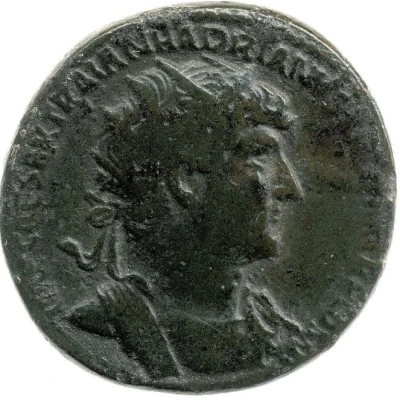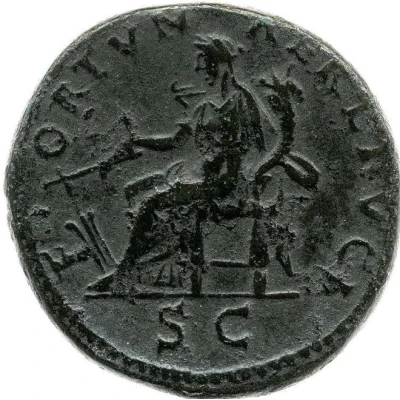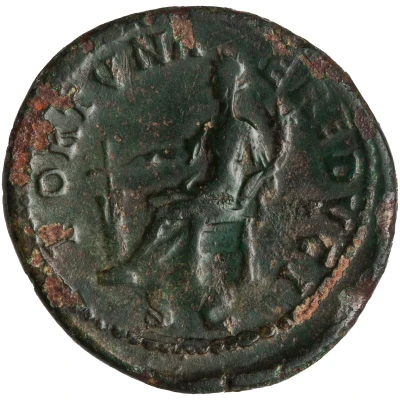Dupondius - Hadrian FORTVNAE REDVCI S C; Fortuna
| Orichalcum | 12.5 g | 27 mm |
| Issuer | Rome › Roman Empire (27 BC - 395 AD) |
|---|---|
| Emperor | Hadrian (Publius Aelius Hadrianus) (117-138) |
| Type | Standard circulation coin |
| Years | 121-123 |
| Value | 1 Dupondius = ⅛ Denarius |
| Currency | Denarius, Reform of Augustus (27 BC – AD 215) |
| Composition | Orichalcum |
| Weight | 12.5 g |
| Diameter | 27 mm |
| Shape | Round (irregular) |
| Technique | Hammered |
| Demonetized | Yes |
| Updated | 2024-10-06 |
| Numista | N#255169 |
|---|---|
| Rarity index | 95% |
Reverse
Fortuna, seated left, holding rudder and cornucopia.
Script: Latin
Lettering:
FORTVNAE REDVCI
S C
Translation:
Fortunae Reduci. Senatus Consultum.
To returning fortune. Decree of the senate.
Comment
Source: Online Coins of the Roman Empire (OCRE)Interesting fact
The Dupondius coin featuring Emperor Hadrian and the goddess Fortuna is an interesting example of Roman currency during the 2nd century AD. One fascinating fact about this coin is that it was made of a metal called Orichalcum, which was a bronze-like alloy that was highly valued in ancient times for its durability and resistance to corrosion. Orichalcum was often used in the production of coins, weapons, and other objects that required strength and longevity. The use of this metal in the production of the Dupondius coin speaks to the advanced metallurgical techniques and technologies employed by the Roman Empire during this period.



